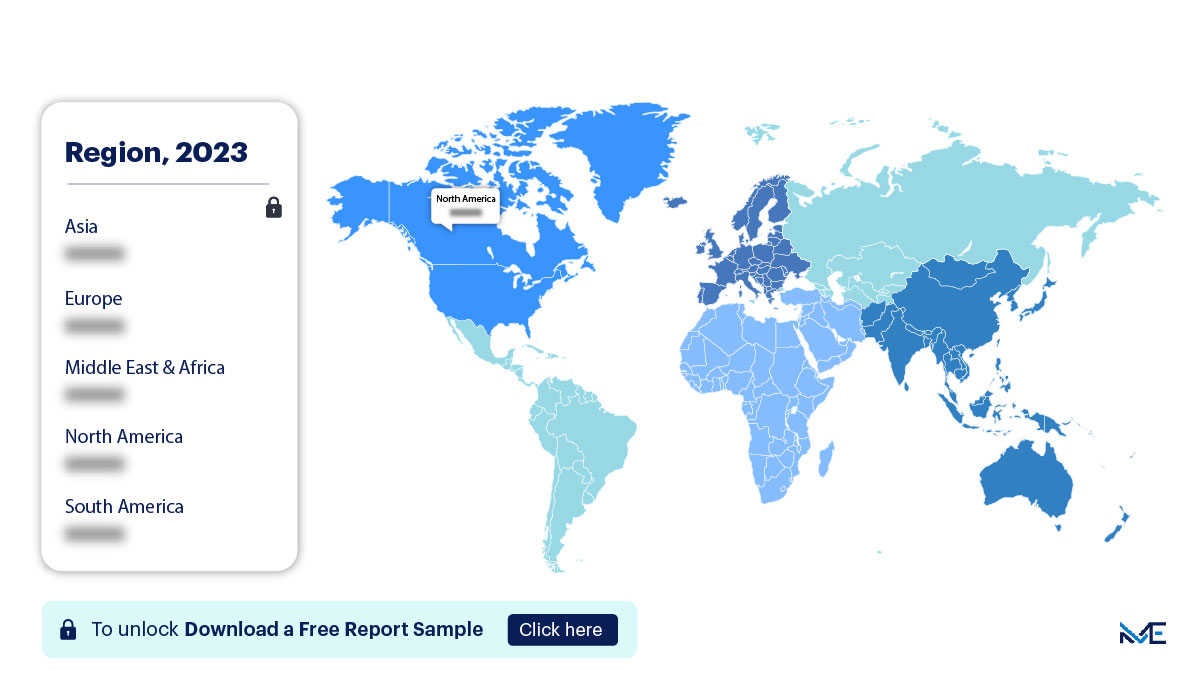Market Snapshot
| Study Period | 2019-2032 |
| Base Year | 2023 |
| Forcast Year | 2023-2032 |
| CAGR | 8.47 |


Gain accurate insights regarding the negative impacts of COVID-19 on all markets and industries
Download Sample PdfReport Overview
The Generic Pharmaceuticals Market size is estimated to grow at a CAGR of 5.8% between 2022 and 2032. The market size is forecast to increase by USD 145.6 billion. The growth of the market depends on several factors, including the rising demand for cost-effective medications, patent expiries of major drugs, and increasing healthcare expenditures. Generic pharmaceuticals are bioequivalent versions of brand-name drugs, offering the same quality, safety, and efficacy but at significantly lower prices. They play a vital role in providing affordable healthcare solutions to a wide population.
Generic Pharmaceuticals Market Overview:
Drivers:
One of the key factors driving the Generic Pharmaceuticals market growth is the increasing demand for cost-effective medications. With rising healthcare costs and the need for accessible treatment options, patients and healthcare providers are increasingly turning to generic drugs. Generic pharmaceuticals typically cost a fraction of the price of brand-name drugs, making them an attractive choice for both consumers and healthcare systems.
Patent expiries of major drugs are also contributing to market growth. As patents on brand-name drugs expire, it opens the door for generic manufacturers to introduce bioequivalent versions, leading to increased competition and lower drug prices.
Trends:
A notable trend in the Generic Pharmaceuticals market is the emergence of super generics. Super generics are advanced generic drugs that offer enhanced features compared to traditional generics. They may have improved formulations, delivery mechanisms, or therapeutic benefits. The development and adoption of super generics are driven by the desire to provide more effective and patient-friendly alternatives to conventional generics.
Another trend is the growth of biosimilars. Biosimilars are generic versions of biologic drugs, and their market is expanding due to the increasing number of biologics coming off-patent. Biosimilars offer cost savings and improved access to biologic therapies for various medical conditions.
Restraints:
One of the challenges hindering the Generic Pharmaceuticals market's growth is the stringent regulatory requirements for approval. Generic drug manufacturers must demonstrate bioequivalence to the brand-name drug, which involves rigorous testing and clinical trials. Meeting these requirements can be time-consuming and costly, affecting the speed at which new generics enter the market.
Moreover, the threat of counterfeit generic drugs is a concern. Ensuring the authenticity and quality of generic pharmaceuticals, especially in regions with weaker regulatory oversight, is crucial to maintaining patient safety and trust in generic medications.
Generic Pharmaceuticals Market Segmentation By Application:
The hospitals segment is estimated to witness significant growth during the forecast period. Hospitals are major consumers of generic pharmaceuticals, as they strive to manage healthcare costs while delivering quality care. Generic drugs are commonly used in hospital settings to treat a wide range of medical conditions, including chronic diseases, infections, and post-operative care.
Retail pharmacies and online pharmacies also play a vital role in the distribution of generic medications. Retail pharmacies offer convenient access for patients to fill prescriptions, while online pharmacies provide a platform for purchasing medications from the comfort of one's home. These segments collectively contribute to the availability and accessibility of generic pharmaceuticals.
Generic Pharmaceuticals Market Segmentation By Type:
The simple generics segment represents the majority of generic pharmaceuticals available in the market. Simple generics are direct copies of brand-name drugs, offering the same active ingredients, dosage forms, and routes of administration. They are widely prescribed and dispensed due to their affordability and equivalence to brand-name counterparts.
Super generics are a growing segment, with increasing interest in developing more advanced generic formulations. Super generics may have unique drug delivery technologies, extended-release mechanisms, or improved efficacy profiles compared to simple generics.
Biosimilars represent a specialized category of generic pharmaceuticals that replicate biologic drugs. Biosimilars are used to treat complex medical conditions, such as cancer and autoimmune diseases. Their development involves demonstrating similarity to the reference biologic drug in terms of safety and efficacy.
Regional Overview:

Download the report summary now!
Request pdf Sample
North America is estimated to contribute significantly to the global Generic Pharmaceuticals market during the forecast period. The region's well-established healthcare infrastructure, robust regulatory framework, and the prevalence of generic drug utilization support market growth. The United States, in particular, is a major market for generic pharmaceuticals.
Europe is another prominent market for Generic Pharmaceuticals, with countries like Germany, the United Kingdom, and France driving demand. The European Medicines Agency (EMA) plays a crucial role in regulating and approving generic drugs within the European Union.
Asia-Pacific (APAC) is witnessing rapid growth in the Generic Pharmaceuticals market due to its large population, increasing healthcare needs, and expanding pharmaceutical manufacturing capabilities. Countries like India and China are significant contributors to the production and export of generic drugs.
Generic Pharmaceuticals Market Customer Landscape:
The Generic Pharmaceuticals market report includes an analysis of the customer landscape, covering healthcare providers, patients, and pharmaceutical companies. It assesses factors influencing the choice of generic medications, including cost considerations, therapeutic equivalence, and patient preferences.
Major Generic Pharmaceuticals Market Companies:
Companies operating in the Generic Pharmaceuticals market are implementing various strategies to enhance their market presence. These strategies include product development, strategic partnerships, mergers and acquisitions, and geographical expansion. Some of the major players in the market include:
- Teva Pharmaceutical Industries Ltd.
- Sandoz International GmbH (a subsidiary of Novartis AG)
- Mylan N.V.
- Fresenius Kabi AG
- Lupin Limited
- Dr. Reddy's Laboratories Ltd.
- Apotex Inc.
- Sun Pharmaceutical Industries Ltd.
- Cipla Limited
- Hikma Pharmaceuticals PLC
- Perrigo Company PLC
- Endo International PLC
- Stada Arzneimittel AG
- Zydus Cadila
- Aurobindo Pharma Limited
These companies are actively engaged in the production and distribution of generic pharmaceuticals and are key players in the global Generic Pharmaceuticals market.
Segment Overview:
The Generic Pharmaceuticals market report provides revenue forecasts at the global, regional, and country levels. It offers an in-depth analysis of trends and growth opportunities from 2019 to 2032.
- Application Outlook (USD Million, 2019 - 2032):
- Hospitals
- Retail Pharmacies
- Online Pharmacies
- Type Outlook (USD Million, 2019 - 2032):
- Simple Generics
- Super Generics
- Biosimilars
- Geography Outlook (USD Million, 2019 - 2032):
- North America
- The United States
- Canada
- Europe
- Germany
- The United Kingdom
- France
- Rest of Europe
- Asia-Pacific
- India
- China
- South America
- Brazil
- Argentina
- Chile
- Middle East & Africa
- Saudi Arabia
- South Africa
- Rest of the Middle East & Africa
RESEARCH METHODOLOGY
A research methodology is a systematic approach for assessing or conducting a market study. Researchers tend to draw on a variety of both qualitative and quantitative study methods, inclusive of investigations, survey, secondary data and market observation.
Such plans can focus on classifying the products offered by leading market players or simply use statistical models to interpret observations or test hypotheses. While some methods aim for a detailed description of the factors behind an observation, others present the context of the current market scenario.
Now let’s take a closer look at the research methods here.
Secondary Research Model
Extensive data is obtained and cumulated on a substantial basis during the inception phase of the research process. The data accumulated is consistently filtered through validation from the in-house database, paid sources as well reputable industry magazines. A robust research study requires an understanding of the overall value chain. Annual reports and financials of industry players are studied thoroughly to have a comprehensive idea of the market taxonomy.
Primary Insights
Post conglomeration of the data obtained through secondary research; a validation process is initiated to verify the numbers or figures. This process is usually performed by having a detailed discussion with the industry experts.
However, we do not restrict our primary interviews only to the industry leaders. Our team covers the entire value chain while verifying the data. A significant number of raw material suppliers, local manufacturers, distributors, and stakeholders are interviewed to make our findings authentic. The current trends which include the drivers, restraints, and opportunities are also derived through the primary research process.
Market Estimation
The market estimation is conducted by analyzing the data collected through both secondary and primary research. This process involves market breakdown, bottom-up and top- down approach.
Moreover, while forecasting the market a comprehensive statistical time series model is designed for each market. Macroeconomic indicators are considered to understand the current trends of the market. Each data point is verified by the process of data triangulation method to arrive at the final market estimates.
Final Presentation
The penultimate process results in a holistic research report. The study equips key industry players to undertake significant strategic decisions through the findings. The report encompasses detailed market information. Graphical representations of the current market trends are also made available in order to make the study highly comprehensible for the reader.
Personalized Business Report Tailored to Your Requirements
- Our expert analysts collaborate directly with you to comprehend your specific needs.
- Get data on regions, segments, competitors, and vendors of your choice.
- Information is presented in alignment with your exact preferences and formatting.
Free Sample Report
"Find new revenue generation opportunities"

